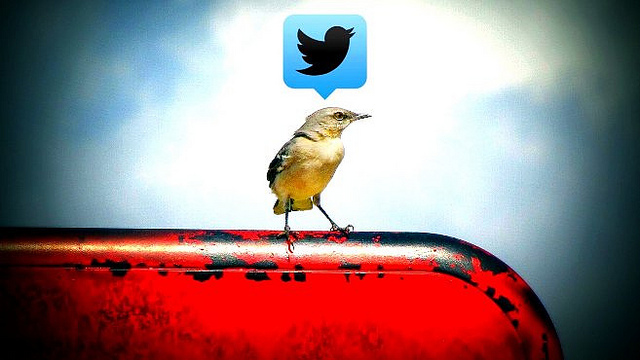Potential Buyers Wait For Twitter’s Market Cap to Fall Further
Twitter (NYSE: TWTR) continues to struggle with low revenue and user growth. Video is now its new strategy. In politics, however, Twitter is playing an unprecedented role. Trumpism rests heavily on the power of tweets, both proactive and reactive.
Twitter’s Financials
For the fourth quarter of the year, Twitter’s revenues grew just 1% over the year to $717 million, missing the Street’s forecast of $740 million. GAAP net loss was $167 million, or $0.23 per diluted share. Non-GAAP net income was $119 million, or $0.16 per diluted share, ahead of the market’s projected earnings of $0.12 per share.
By segment, Advertising revenue was $638 million, down from $641 million last year. This was its first ever y-o-y decline. Mobile advertising revenue was 89% of total advertising revenue. Data licensing and other revenue grew 14% to $79 million. US revenue declined 5% to $440 million and international revenue grew 12% to $277 million. Total advertising engagements were up 151%. Cost per engagement (CPE) was down 60% y-o-y.
Twitter added just two million monthly active users (MAU), ending 2016 with 319 million MAU. Despite the elections, there was no US user growth. For comparison, Facebook added 72 million monthly active users during the fourth quarter, down from 76 million in the third quarter, but up from 46 million in the fourth quarter of 2015.
The only positive impact of the elections was the rise in active usage. Average daily active usage grew 11% compared to 7% in Q3, 5% in Q2 and 3% in Q1 of 2016.
Video is now a prime focus area for Twitter. It attracted 31 million unique viewers in its first quarter of operations. It streamed more than 600 hours of live premium video from content partners across roughly 400 events.
For the full year 2016, Twitter’s revenue grew 14% to $2.5 billion. GAAP net loss was $457 million or $0.65 per share compared to $0.79 per share a year ago.
Twitter expects advertising revenue growth to continue to lag that of audience growth in 2017 due to increasing competition and Twitter’s re-evaluation of its revenue product feature portfolio. It did not provide specific revenue guidance for the first quarter and full year 2017.
Twitter’s Initiatives
During the fourth quarter, Twitter launched several features designed to show people the most important Tweets first — news and commentary they would have wanted to see but may have missed. It also improved the relevance of notifications to increase engagement, which it claims has improved retention for both monthly active and daily active usage, as well as increased Tweet impressions and time spent on the service.
It plans to apply machine learning more broadly across its service in 2017. It is also focusing on simplifying and creating a single destination for people to discover what’s happening on Twitter.
Making Twitter safer is a primary focus for Twitter in 2017. It has launched features that give people more control over their experience, like muting notifications for keywords and conversations.
Video is another focus area. In 2016, Twitter brought on board nine syndication partners and four top partners to further expand live content distribution. In its 10-week NFL #TNF programming, it generated more than 3.5 million unique viewers on average, per game. In news and politics, it partnered with Bloomberg, BuzzFeed News, and PBS NewsHour. Viewership of the presidential debates reached about 4.2 million unique viewers during the final debate, 7.5 million for election night, and 8.6 million unique viewers for the inauguration live streams. The Golden Globes, its first red carpet event in Q1 2017 reached about 2.7 million unique viewers.
Increasing competitive pressures are bogging Twitter down. It hasn’t made the progress it expected over the last year in some direct response ad formats and has seen a decline in its original Promoted Tweet engagement ad format. It is now re-evaluating revenue product features and roadmaps to simplify its portfolio and buying process for advertisers.
eMarketer estimates that the number of people in the US with a Twitter account will increase only 1.9% in 2017.
The heat is on in the video race, and now Twitter is also getting into it. YouTube is already facing the heat from Facebook and Snapchat. I believe Alphabet will eventually buy the struggling Twitter, which can help it gain an important strategic asset in social media, an arena in which Google never really made a mark. Twitter will continue to remain a political force and my bet is that Google will want to control that. They’re just waiting for the price to fall further before making a move. Facebook may also bid.
Twitter’s stock is trading at $15.58 with a market capitalization of $9.76 billion. It touched a 52-week high of $24.87 in October last year and had fallen to a 52-week low of $13.73 in May last year.
Photo Credit: Uncalno Tekno/Flickr.com
Featured Videos
Can 1M/1M Help Me Raise Money?
How Does 1M/1M Democratize Entrepreneurship Education?
How Does 1M/1M Democratize Management Consulting?
When Is The Right Time To Join 1M/1M?
Can 1M/1M Help Me With Business Development?
Can 1M/1M Help Me With Market Sizing?
Can 1M/1M Help Me Validate My Product?
Will I Have Private 1-on-1 Sessions In 1M/1M?
How Does 1M/1M Help Entrepreneurs Connect With Silicon Valley?
Mentoring or Consulting?
Why Does 1M/1M Charge $1000 a Year?
Why Does 1M/1M Partner With Local Organizations?
Why Don\’t Mentoring Networks Work?
Why Is It Important To Study With 1M/1M Now?
Dan Stewart Story
Vikrant Mathur Story

